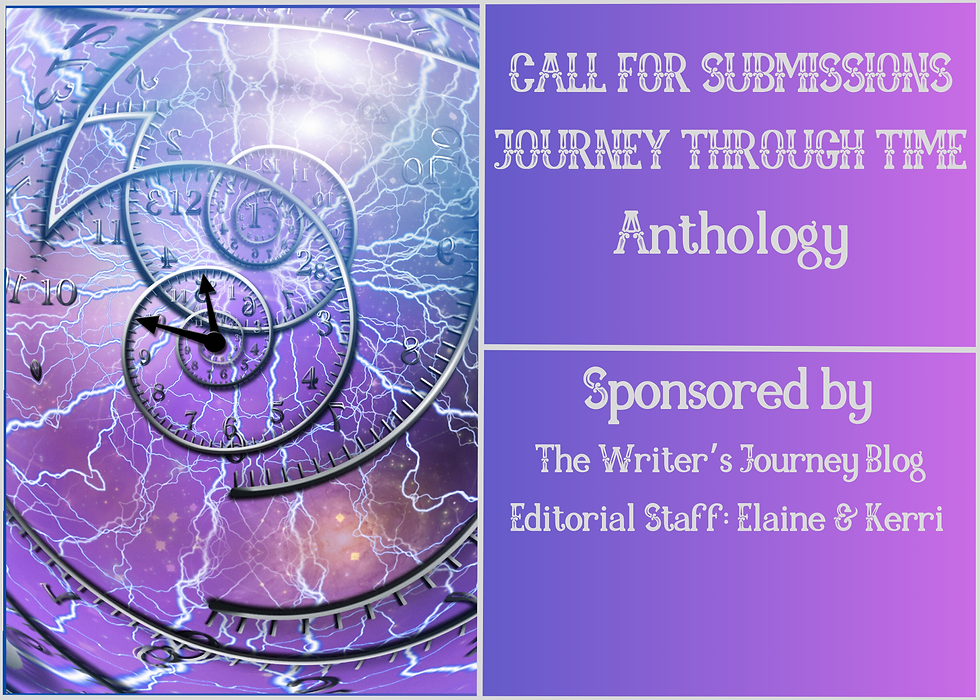WRITING OUTSIDE THE VACUUM
- Elaine Marie Carnegie

- Jan 8, 2023
- 3 min read
by P. A. O'Neil

Please welcome P. A. O'Neil to the Writers Journey Blog this week with her relevant feature on Writing Outside the Vacuum!
Writing Outside the Vacuum
Recently, while sharing my current Work-In-Progress (WIP) with a Beta reader, he commented on what he felt was the lack of a vacuum to engage the reader towards the end. The importance of the ‘vacuum’ to, suck, the reader into the story is a rule that has been stressed in Grant Hudson’s, How Stories Really Work: Exploring the Physics of Fiction. This book stresses through examples of famous books, plays, and movies, the importance of setting up obstacles/challenges for the characters to overcome throughout the plot, taking the reader along with them to the climactic/satisfying end.
What if your story is a prequel such that the reader already knows the end will lead to some other story beginning? Such is the WIP I have been working on. The original story begins with the meeting of the two main characters. There have been many stories written about the life previous to this meeting of the star, or hero as described by Hudson. One of the other necessary characters is the sidekick, sometimes comical but always dependable, what about his/her life prior to their fateful meeting? This is the story I chose to write.
What lead up to that fateful meeting? A fan of the original story already knows, but just how strong was the desire for the sidekick to latch onto the hero’s reality? Could his/her vacuum be so great that the enormity of the event be described in a story that encompassed only one day in the life of the soon to be sidekick, while he/she is still the hero of his own?
I chose to present the lead character’s life as a mixture of short events/trials, each having to be overcome yet leading toward the climatic end which is actually the beginning for the original story. Why should the reader care about the sidekick? There had to be character shaping events that placed him/her in the, then present, spot. Are they dwelled upon? Are they considered setbacks?
All of this can be achieved by splitting up the plot into smaller vacuums, each directing the character to the final scene, but on their own any deviation could’ve sent the lead down another path thus preventing the sidekick from the fated appointment. The Beta reader’s comment made me think about what I was trying to achieve with this story. My response was trying to demonstrate the desperation the character felt, of which he agreed, while also explaining how the sidekick was maintaining their existence in the window of a few hours’ time prior to the well-known scene in the other story.
The writing has to be done carefully and kept interesting while maintaining plausibility. I believe I have achieved that with my WIP, but I will only be able to know after it is released to the public for their evaluation. The lesson to learn here is you need to be familiar and understanding of a rule before you try attempt to break it. I have a long way to go before I will ever consider myself a successful writer, but through attempts at writing stories like this one will definitely make a stronger one for sure.
Click the cover below to browse or purchase!
Bio: P.A. O’Neil has been writing professionally for six years. Her stories have been featured in multiple anthologies, as well as on-line journals and magazines from several continents. She is twice the winner of “Story of the Month” on the Spillwords.com website. She and her husband reside in Thurston County, Washington. Her book, Witness Testimony and Other Tales is available in paperback and eBook, from Amazon. For links to other books which feature her stories, please visit her Amazon author page:P.A. O’Neil




What a challenge P.A., to write the story set before the story... You have taken the character that is not front and center and tried to make them the focus. I admire that... I hope you have great success and sell many copies.
I love your explanation of using Grant Hudson's wonderful book, "How Stories Really Work". It's a wonderful and helpful book for any level writer. I'm looking forward to reading your next book as soon as it's available! Thank you for this thoughtful post, Patt.
There was a lot of food for thought here, P, A. Thank you so much for sharing your insights. By the way, I bought your collection Witness Testimony and Other Tales when it first came out and loved it. You are very talented, and I wish you all the best of success on your current project. A
Thanks for your support, Mark.
That's perceptive advice. And I'm sure especially when writing a prequel, although I myself have never written one per se. Also, it's most helpful directing the reader to Grant's work on the writing craft. An excellent resource. Best of luck when you launch the new work! 🙂